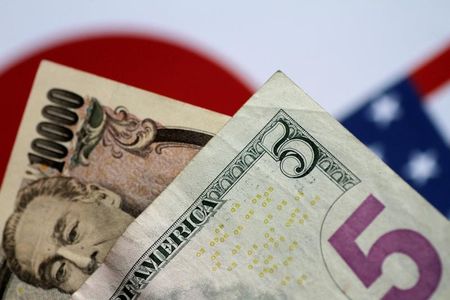
Investing.com –The USDJPY exchange rate, after a sharp drop from 162 in early July to 141.7 in early August, has recently stabilized within a range of 143.5 to 149.5.
In a note to clients Wednesday, UBS analysts stated: “We believe this range is likely to hold for the next three months, for several reasons.” However, looking beyond 2024, UBS forecasts a gradual decline in USDJPY, with the pair likely to reach 138 by September 2025.
The bank maintained its USDJPY forecasts at 147 for December 2024, 143 for March 2025, and 140 for June 2025, with a new target of 138 introduced for September 2025.
This anticipated downtrend is attributed to several factors. First, speculative positioning in leveraged FX markets has turned slightly net long on the yen, suggesting a potential rebuild of yen shorts if global risk sentiment stabilizes.
Additionally, with US interest rate markets pricing in approximately 100 basis points of Federal Reserve rate cuts by the end of 2024, the downside potential for USDJPY is somewhat limited in the near term.
Furthermore, UBS highlights that the USDJPY has converged with the US-Japan 10-year real yield differential, which “could limit further downside potential in the exchange rate.”.
“The downside risk to our USDJPY forecast of 147 by end-2024 is that upcoming US economic data (in particular, the nonfarm payroll data on 6 September) disappoint, which could trigger renewed fears of a US recession and see the USDJPY retest its early August low of 141.7,” adds the bank.
Additionally, the upcoming LDP leadership election in Japan on September 27 could introduce volatility, especially if Shigeru Ishiba, a candidate perceived as positive for the yen, is elected.
“Notwithstanding our view for near-term stability in the USDJPY, we still expect a medium-term downtrend, targeting 143 in March 2025, 140 in June 2025, and 138 in September 2025,” UBS states. “With the Fed likely continuing to cut policy rates systematically over the next 12-18 months, coupled with gradual rate hikes from the BoJ, the narrowing of US-Japan yield differentials will likely drag the USDJPY lower over the medium term.”
This post is originally published on INVESTING.



